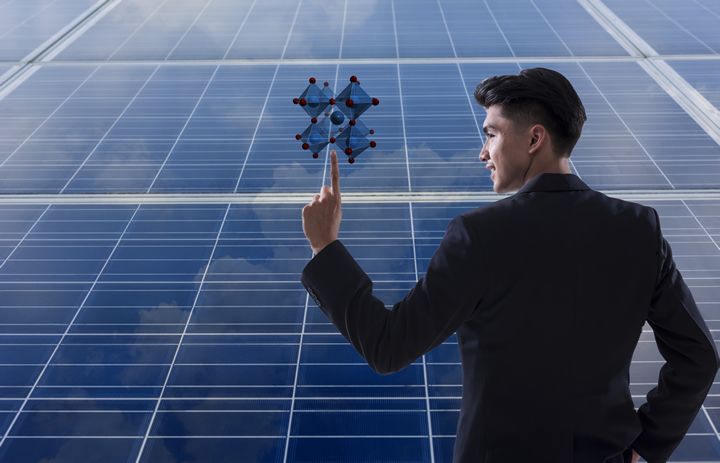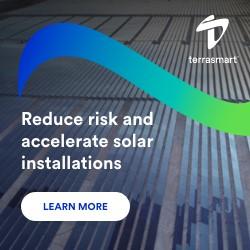To increase understanding, our industry must be more vocal about highlighting its different players, from energy efficiency solutions providers to cleantech developers and even environmental consultants.
 Gen Z and Millennials in the Renewable Energy Workforce
Gen Z and Millennials in the Renewable Energy Workforce

Q&A with Lenka Patten, SVP and Chief Human Resource Officer Ameresco | Ameresco
Can you please tell us your name, your role, and your focus at Ameresco?
 My name is Lenka Patten, and I am the Senior Vice President and Chief Human Resources Officer at Ameresco, a leading energy solutions provider with over 1,500 employees. We are dedicated to helping customers navigate the energy transition by providing them with energy efficiency, resiliency and security solutions. I have worked in HR for over 20 years implementing versatile strategies that put people first and accelerate the overall mission and vision of organizations. At Ameresco, I’m responsible for leading initiatives across talent acquisition, professional development, and employee engagement. I also serve on the executive management team and provide guidance to each business unit on cultivating a strong companywide talent strategy and rewarding employee experience.
My name is Lenka Patten, and I am the Senior Vice President and Chief Human Resources Officer at Ameresco, a leading energy solutions provider with over 1,500 employees. We are dedicated to helping customers navigate the energy transition by providing them with energy efficiency, resiliency and security solutions. I have worked in HR for over 20 years implementing versatile strategies that put people first and accelerate the overall mission and vision of organizations. At Ameresco, I’m responsible for leading initiatives across talent acquisition, professional development, and employee engagement. I also serve on the executive management team and provide guidance to each business unit on cultivating a strong companywide talent strategy and rewarding employee experience.
Can you tell us more about Ameresco’s focus on creating visibility of jobs in the clean energy sector?
In the U.S., the energy sector faces a significant talent gap. While businesses have made strong progress, adding 142,000 jobs in 2023 and counting, we still have work to do. One question that people in my field often ask is “What can we do to attract up and coming talent and keep them in the industry?”, but over the years, this question has remained unanswered.
Since joining Ameresco in 2022, I’ve presented at hundreds of career events and college campuses, and one finding sticks out to me: “People don’t know what they don’t know”. From analysts to engineers, clean energy work is often done in the background (and unlike other professions, we don’t have movies and TV shows to showcase our sector), so without visibility into this space, students do not know that this field is even an option.
At Ameresco, our recruitment strategy leaves no stone unturned. We understand that early exposure has an immense impact, so we’re building relationships with K-12 organizations, such as STEM Like a Girl, to get early learners interested in the field. We also have a tradition of incorporating STEM grants into our clean energy projects, such as our Kūpono Solar Project, to help eliminate financial barriers that prevent people from joining technical professions.
Our most exciting initiative yet is our 2024 Empowered Futures Report. This survey of 600 Millennials and Gen Z respondents, gets to the bottom of what’s holding the next generation back from clean energy careers. And guess what? The findings suggest that awareness is a key obstacle. With this insight, Ameresco is approaching recruitment with a focus on introducing candidates to the depth and breadth of roles in clean energy and conveying to young people that “there is a place for you” in this sector.
Why did Ameresco decide to participate in the Ritenour Path 2 Trades Program? Are there any other programs like this that Ameresco works with?
If you were to talk to any of my colleagues about their career journey, you’d find mentorship to be a common theme throughout. For many team members, there was one inspirational person in their life that really took them under their wing and provided invaluable career guidance to put them on a path to success.
We want to pass the gift of mentorship on to students, and that’s what the Ritenour School District Path to Trades (P2T) program is all about—equipping the next generation with tangible skills to jumpstart a career in the skilled trades. Electrical work, construction, and environmental consulting are in-demand, especially in the clean energy sector, so we want to be front and center, building out the talent pipeline.
Missouri is one state that is leading in job growth and has great potential for economic transformation. Ameresco’s decision to partner with the Ritenour School District takes this growth potential into account and inspired our decision to make the commitment.
Recently, in Nelsonville, Ohio, Ameresco worked side-by-side with high school students in the Tri-County Career Center’s Electrical Trades program to install a solar PV project on the Center’s rooftop. This initiative provided students with a firsthand perspective of what the work of a solar installer entails. Ameresco also partners with schools, such as The Match High School and Career Center, to execute energy efficiency projects, upgrading educational facilities to support STEM and vocational learning. Initiatives such as these are part of our broader focus on expanding the clean energy workforce.
How are roles in the energy sector shifting as new technologies take hold, e.g. next-gen geothermal?
The next phase of energy sector growth is quickly taking shape. As expansion of the digital world and advances in computing increase power needs, aging infrastructure is being stretched beyond its limit. Over the next decade and beyond, energy solutions will be focused on maximizing resources and optimizing consumption—whether that’s using a floating solar PV to leverage an underutilized resource or Small Modular Reactors for industrial electricity needs.
When it comes to geothermal, Ameresco has always been at the forefront of this technology, leveraging it to provide 100% carbon-free heating, cooling, and hot water needs for facilities. My colleagues are very interested in implementing the enhanced and more cost-effective systems that next-gen geothermal promises.
With new technologies gaining popularity, we’re anticipating an increased demand for more specialized roles. So, there will be a need for people that are experts in advanced nuclear, hydropower, bioenergy, and more. We’ll also see adjacent industries— technology, utilities, even healthcare—need clean energy talent to plan, advise, and execute new initiatives.
Lastly, given the increased digitization of most energy systems, there’s a rising demand for more technologists, people skilled in AI, data and analytics, and of course, cybersecurity.
What is holding Gen Z and Millennials back from joining the renewable energy workforce?
Ameresco’s 2024 Empowered Futures Report revealed that most respondents lacked clarity on what a clean energy job truly entails. So, as discussed earlier, a key obstacle to Gen Z and Millennials joining the field is lack of awareness.
To increase understanding, our industry must be more vocal about highlighting its different players, from energy efficiency solutions providers to cleantech developers and even environmental consultants. We must also convey that a four-year degree is not the only path to a clean energy job, many roles, such as solar panel installation or wind turbine repair, require two-year vocational programs.
There is also a misconception about the versatility of roles available. Our sector certainly needs engineers, machinists, operators, and technicians that are hands-on directly implementing clean energy systems. But this industry also requires corporate or non-technical roles such as those in marketing, finance, human resources, or government and policy relations.
Do you have any other thoughts on how other companies can look to educate the next generation on how they can ‘do good while doing well’?
In Empowered Futures, 90% of respondents desire a job that pays well, but also offers a sense of purpose and aligns with their core values. This finding tracks well with trends we see play out in the real world. Millennials and Gen Z are committed to advocacy and community action and want to be sure that their work reflects these principles. So, the desire to make a positive difference exists in the next generation, but it's up to us leaders to help harness it for true impact.
I’ve found that the best way to educate is to “do”. When companies lead by example, putting their people first, and carefully considering how business decisions may impact the community, and the world at large, our employees—those younger and more senior—also feel the call to act. This shows up as team members making responsible business decisions, treating each other with care and respect, and also fostering a culture of collaboration.
The content & opinions in this article are the author’s and do not necessarily represent the views of AltEnergyMag
Comments (0)
This post does not have any comments. Be the first to leave a comment below.
Featured Product

